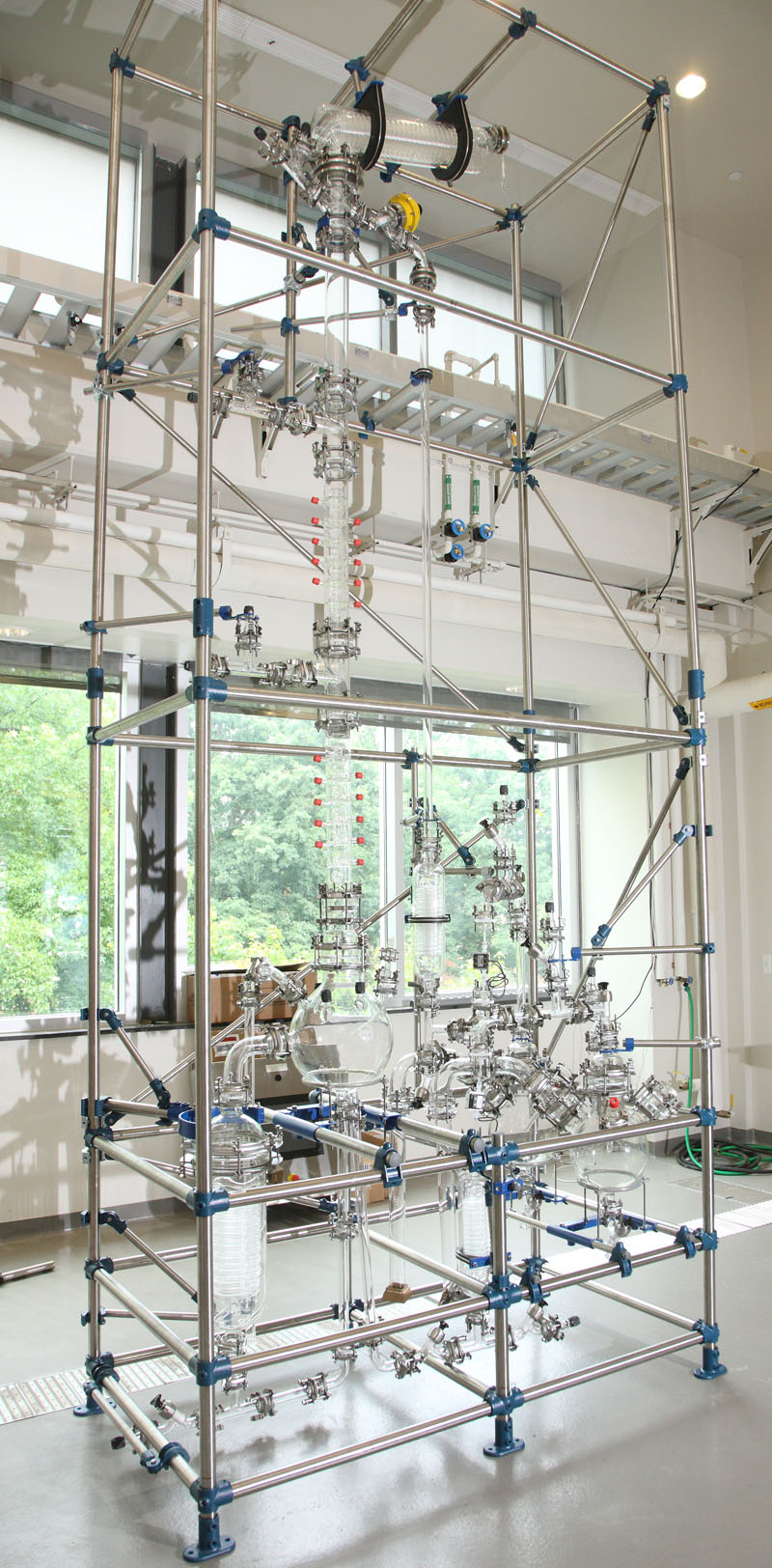A fundamental breakthrough in the development of chemical engineering pedagogy was the realization, almost 100 years ago, that engineers in a variety of industries share a common toolkit. Whether engineers make plastics or pharmaceuticals, they build the chemical processes they need by stringing together a sequence of essentially identical unit operations.
“The education of chemical engineers can fairly be said to begin when they start learning about unit operations,” said Eric Anderson, the lecturer in the University of Virginia School of Engineering and Applied Science’s Department of Chemical Engineering who oversees the third-year Unit Operations Laboratory. “That’s why the installation of a new distillation column in the third-year lab is so important.”
Even among unit operations, distillation stands out for being so common. It is used to separate substances with different boiling points. When you put gasoline in your car or enjoy a single-malt scotch, you’re benefitting from the products of distillation.
Just because unit operations can be traced to the dawn of chemical engineering, however, doesn’t mean they have stopped evolving. New distillation columns have digital controls and computerized data acquisition capabilities. The old distillation column had none of these features – and it was powered by electricity. The new one is powered by steam, like most modern columns.
The most obvious difference, however, is its size. The old column was six feet tall; the new one is 20 feet. It fits into a bay in the Unit Operations Laboratory in Wilsdorf Hall that was designed to accommodate it. In this respect, it is more like the distillation columns used in industry to prototype new processes.
From an educational point of view, realism isn’t the only advantage of the new column. Taken together, the improvements combine to produce a significantly better learning experience for students.
The length of the column, for instance, gives students the opportunity to try their hands at more complex distillation processes and helps them gain a better appreciation of the variables that can affect the outcomes. The computerized controls and data acquisition gives students experience tracking transient behavior in real time and making changes on the fly. The computer data acquisition is particularly useful for comparing experimental results with computer simulations.
“As a teaching tool, the new column is a dramatic improvement,” Anderson said. “And because it’s glass, students can literally see into the process.”
The new distillation column is currently undergoing tests in preparation for its unveiling in the spring semester.
The school was able to replace the old column thanks to funds from the engineering course fee, a fee related to the cost of labs and for providing state-of-the-art technology to students enrolled in the Engineering School and taking courses in the school. The fee was approved by the Board of Visitors in April 2012. Support through the Commonwealth’s Higher Education Equipment Trust Fund also helped make the purchase of the new column possible.
“We had been wanting to replace and upgrade the distillation column for awhile,” said Roseanne Ford, professor and chair of the chemical engineering department. “The course fee made a real difference in it finally happening.”
Anderson is already planning the next planned improvement for the lab – renovating the fluid flow experiment. Further improvements to the Unit Operations Laboratory and to the fourth-year chemical engineering lab will owe much to the generosity of former research professor Ramon Espino and his wife, Graziella. The couple, together with corporate matching from ExxonMobil, established a $100,000 fund to support the operations of the Unit Operations Laboratory and the fourth-year chemical engineering lab.
-- by Charlie Feigenoff
Media Contact
Article Information
September 18, 2013
/content/state-art-column-improves-undergraduate-experience-chemical-engineers

